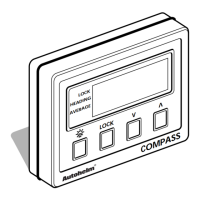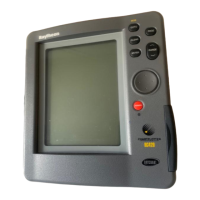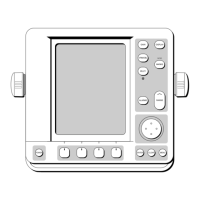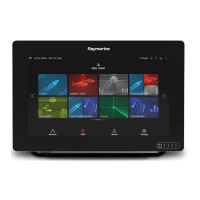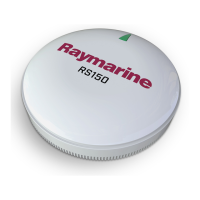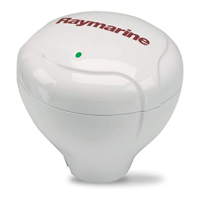offered by Busse-Yachtshop.com
Chapter 3: System Tests and Alignment -41
Alignment checks
With the radar transmitting correctly, the system should now be aligned as follows:
Bearing alignment
To adjust the bearing alignment, you need to select a visible target of known bearing
that is displayed on the radar, and then adjust the radar set up as necessary until the
correct bearing reading is obtained.
You can carry out a bearing alignment with your boat moored, or under way in
reasonably calm conditions.
Bearing alignment with your boat moored
You will need a hand bearing compass to carry out this method.
1. Visually identify a suitable target, such as a buoy that can be seen towards the edge
of the radar screen. Typically, this will be on the 1.5nm range.
2. Determine the accurate bearing of the target relative to your boat’s bow using the
hand bearing compass. To do this subtract your boat head bearing from the target
visual bearing, these examples may help:
3. From the primary radar softkeys, press VRM/EBL.
4. Toggle the VRM/EBL softkey to ON. Adjust the EBL to your chosen target.If there is
a difference between your calculated bearing and that shown on screen there is an
alignment error.
5. Carry out bearing alignment adjustment,
See “Adjusting the bearing alignment”
on page 42.
Bearing alignment with your boat under way
To check bearing alignment with your boat under way:
1. Align your boat’s bow with the selected target.
2. Note the position of the target relative to the Ships Heading Marker (SHM) on the
radar picture. If the target is not under the SHM, there is an alignment error.
3. Carry out bearing alignment adjustment,
See “Adjusting the bearing alignment” on
page 42.
Example 1 Example 2
Visual bearing (a) = 065° M Visual bearing (a) = 030° M
Ships head bearing (b) = 021° M Ships head bearing (b) = 042° M
Relative bearing
= (a) - (b) 065 - 021 = 044° R
Relative bearing
= (a) - (b) -12° (+360) = 348° R
